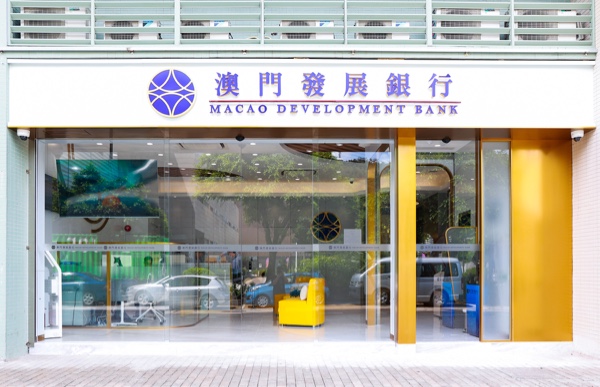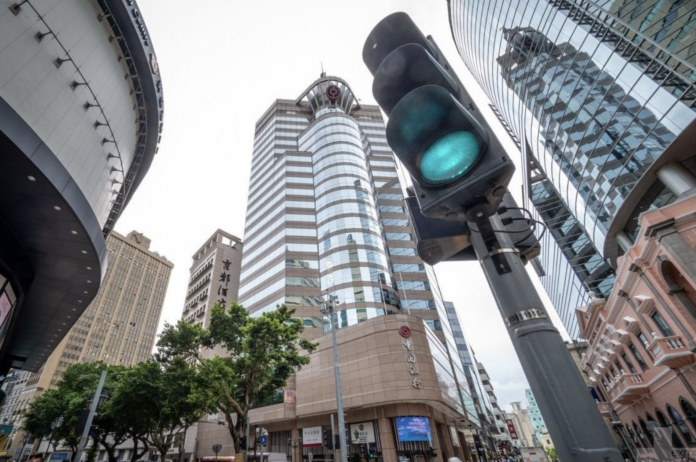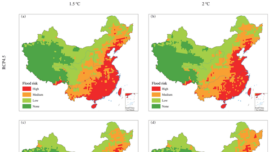The two Bank of China licenses continued to dominate the rankings last year, although with lower profits. While it was a tough time for Tai Fung and Luso International, BNU and Bank of Communications had a rosy 2023, lifting them to the city’s top five performers
João Paulo Meneses


Of the 33 banks operating in Macau that regularly present results, “only” 12 reported losses in 2023, compared to seven in 2022. However, this number is not the standout feature when reviewing the SAR’s banking sector performance for the year. A reshuffle occurred in the top five most profitable banks.
Although the two Bank of China licenses remain the leaders, they recorded an aggregated drop of MOP 4.5 billion compared to 2022. The banks that followed in the profitability ranking suffered significant losses and have now fallen to the bottom of the table.
The bank that was third (Industrial and Commercial Bank of China, Macau SA) dropped to 15th, while the fourth (Tai Fung) is now the one with the most losses. This shift also includes Luso International Bank, which was among the top five most profitable but now ranks at the bottom.
As these banks moved down, others ascended: Bank of Communications (previously 6th) and Banco Nacional Ultramarino (8th in 2022) are now the third and fourth most profitable, respectively.

This dramatic shift from profitability to losses among the leading banks contributed to a 53.5 percent decline in overall profits for Macau’s banking sector compared to 2022. In total, Macau banks recorded profits of MOP 6.14 billion.
The Monetary Authority of Macau (AMCM) has attributed the drop in banking sector profits primarily to a negative performance in the last quarter of 2023. According to AMCM, local banks lost MOP 4.09 billion in the three-month period ending in December alone, compared to profits of MOP 10.2 billion during the first nine months of the year.
The regulator explained that the main reason for the decrease in profits was an 11.4 percent drop in the interest margin, which fell to MOP 19.5 billion. The interest margin is the difference between income from loans and expenses on deposits.
This decline occurred despite the AMCM having approved three increases in the main reference interest rate in 2023, with the last being a 0.25 percentage point increase in May, following the US Federal Reserve.


What the banks say
Consulting the reports and accounts of some of the banks that recorded the most losses, it is clear, however, that there are other reasons, in addition to those highlighted by AMCM.
Luso International Bank, for example, lists several reasons for the abrupt drop in its accounts: “In 2023, the global political and economic situation changed substantially, the engine of the world economy slowed down due to divergences, cyclical and structural contradictions from China have increased even further.”
The bank’s management also speaks of “problems such as the periodic misalignment of monetary policy between China and the USA, the risk of real estate credit and the reduction in pressure from debts contracted by local governments continued to be evident.”
The management of the Bank of China SA (which had its first full activity in 2023) speaks of the “overlapping geopolitical conflicts and the impact of high interest rates” which “aggravated fluctuations in the global financial market.”
According to the Tai Fung Bank Report, “the core inflation rate of the main economies remained at a high level, the real estate sector in Mainland China registered a slower recovery than expected, Macau’s economy recovered in an unbalanced manner and the total assets and asset quality of the local banking sector have declined.”
Tai Fung’s managers also justify the results with “the great environmental impact” which “put pressure on the quality of the Bank’s assets and with a view to prudent risk management, with the Bank significantly increasing provisions.”

Among the smaller ones, which also had ‘red’ results, it is known, for example, that the management of Chong Hing Bank blames, in addition to the pressure caused by inflation, “the global economy that continued to gradually recover from the impacts of the pandemic of the new type of coronavirus, as well as the war between Russia and Ukraine.”
At the Bank of East Asia, it is highlighted that “the pace of domestic demand and the recovery of local consumption was slower than expected,” which is why “2023 was a year full of challenges” for the bank: “the quality of assets general continued to be affected, mainly due to the weak outlook for activities in the real estate sector and small and medium-sized companies.”
Finally, CMB Wing Lung, whose managers highlight “the continuation of inflation and high interest rates in the main world economies, as well as the weak recovery of the Chinese economy, resulting from the inertia of the real estate sector and the decrease in external demand.”

A little different is the analysis of the administration of the Macau Chinese Bank (of the Nam Yue Commercial and Industrial Agency): the bank lost more than MOP800 million in 2023 and its managers justify the fact thus: “the internal and external circumstance that the Chinese Bank of Macau faced a severe, complex and changeable era. With the reinforced support of shareholders, the supervisory authority and various sectors of society, Macao Chinese Bank fought to resolve existing problems and difficulties, explored boldly, made constant progress, and overcame the challenges. difficulties, withstood harsh tests, ensured the normal functioning of the Bank, effectively controlled and reduced risk, consolidated the basis for the Bank’s long-term development.”
Banks that improved results
In the midst of the turmoil that was the banking year in 2023, almost half of the banks operating in Macau managed to improve their results (15 out of 33).
In some cases, the profits obtained last year almost doubled those of the previous year (Banco Nacional Ultramarino, or The Shanghai Banking Corporation), but there are some examples in which this increase was even greater (the Commercial Bank of Macau, for example, went from MOP23.9 million to MOP114.4 million).
These 15 positive performances are, however, not enough to avoid the final result, since the gains in question are clearly below what they lost, for example, the two Bank of China licenses (MOP4.5 billion) or the sum of Bank of China (Macao), Tai Fung and Luso International together (MOP3.4 billion).

First year of Everbright Bank of China
2023 was not only the first year of full activity for Bank of China SA. The Everbright Bank of China, which opened its doors in July 2022, also had its first full financial year last year.
“Faced with a complex and severe economic environment, the Bank has always adhered to the concept of prudent and stable operation, achieving coordinated development in terms of scale, quality and efficiency,” says the administration.
The bank’s total asset size reached MOP5.63 billion under global risk control, “which is a hard-won achievement.”
This did not prevent the bank from closing the year with MOP58.2 million in losses.
Annual net income in MOP million (last year’s tanking position)
| Bank (ranked in 2022) | 2023 | 2022 | |
| 1 | Bank of China (Macau Branch) (1) | 3.424 | 4.830 |
| 2 | Bank of China (Macao) SA (2) | 1.572 | 4.730 |
| 3 | Bank of Communications (6) | 738.2 | 681.6 |
| 4 | Banco Nacional Ultramarino (8) | 587.3 | 362.8 |
| 5 | OCBC Bank* (9) | 349.7 | 278.4 |
| 6 | The Hongkong and Shanghai Banking Corporation (12) | 277.5 | 182.2 |
| 7 | Well Link Bank (11) | 237.5 | 210.8 |
| 8 | China Construction Bank (7) | 195.2 | 463.6 |
| 9 | Sinopak Bank (15) | 154.7 | 127.8 |
| 10 | Industrial and Commercial Bank of China (Macau Branch) (17) | 149.5 | 75.5 |
| 11 | Commercial Bank of Macau (19) | 114.4 | 23.9 |
| 12 | Hang Seng Bank (14) | 83.5 | 145 |
| 13 | Banco Comercial Português (16) | 81,6 | 123 |
| 14 | Haitong Bank (18) | 69.6 | 27.7 |
| 15 | Industrial and Commercial Bank of China (Macau) SA (3) | 64.1 | 2.293 |
| 16 | DBS Bank (26) | 39.6 | 7.8 |
| 17 | Caixa Económica Postal (23) | 37.1 | 15.7 |
| 18 | Hua Nan Bank (20) | 19.9 | 18 |
| 19 | First Commercial Bank (25) | 18.5 | 9.8 |
| 20 | CITIC (24) | 8.4 | 12.5 |
| 21 | Standard Chartered Bank (27) | 4.9 | (2) |
| 22 | Agricultural Bank of China (33) | 2.2 | (1.843) |
| 23 | CMB Wing Lung (13) | (14.5) | 172.7 |
| 24 | Citibank (28) | (15) | (3.5) |
| 25 | Ant Bank (30) | (49.8) | (37) |
| 26 | Everbright Bank (31) | (58.2) | (38.5) |
| 27 | Bank of East Asia (22) | (111.2) | 16.3 |
| 28 | Chong Hing Bank (29) | (142.5) | (6.6) |
| 29 | Macao Development Bank (32) | (199.9) | (237.7) |
| 30 | Luso International Bank (5) | (432.8) | 1.800 |
| 31 | China Guangfa Bank (10) | (459.6) | 250.9 |
| 32 | Macao Chinese Bank (21) | (835.7) | (45.8) |
| 33 | Tai Fung Bank (4) | (1.419) | 1.821 |
(source: Annual reports on Official Gazette)
* Previously known as OCBC Weng Hang Bank, it became just OCBC Bank in 2023
























